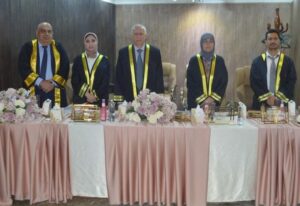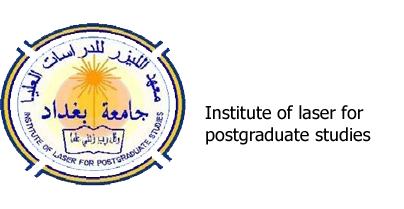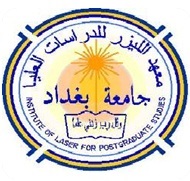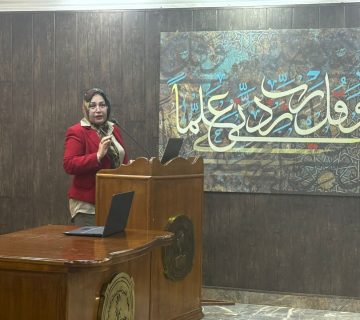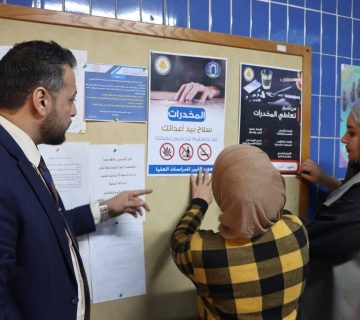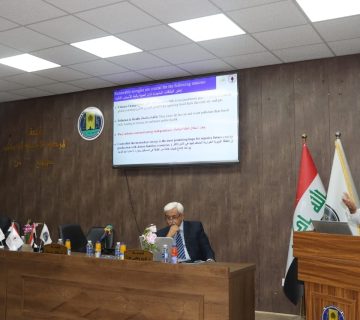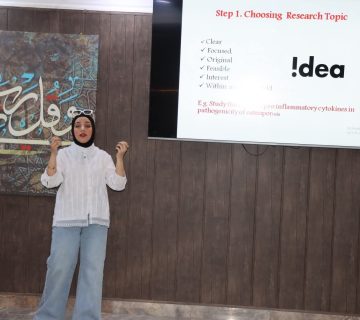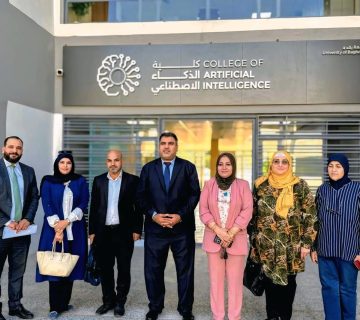A master’s thesis, Iman Shaker Tawfiq, / Laser Applications / Mechanical Engineering, was discussed for her thesis entitled:
Angular Laser Cleaning of Aluminum Alloy 4004
The discussion committee consisted of the professors whose names are listed:
1- Asst. Prof. Dr. Hanan Jaafar Taher / Ph.D. Laser -Physics / Laser Institute for Postgraduate Studies / University of Baghdad / Chair Person
2- Asst. Prof. Dr. Furat Ibrahim Hussein / PhD in Laser Applications – Mechanical Engineering / Al-Khwarizmi College / University of Baghdad / Member
3-Inst. Dr. Ali Zuhair Ridha / Laser Applications / Mechanical Engineering / Institute of Technology / Central Technical University / Member
4- Asst. Prof. Dr. Ziyad Iyad Taha / Ph.D. Laser – Mechanical Engineering / Laser Institute for Postgraduate Studies / University of Baghdad / Member and Supervisor
Where the aim of the study was to achieve laser cleaning of the surface of aluminum alloy grade 4004 by using a laser beam angularly on the surface of the samples using a ytterbium fiber laser to prepare them for welding. The work can be considered as one of the pre-welding pre-procedures
The idea was included in this study
The oxidation of aluminum alloys contributes greatly to the material’s corrosion resistance. Oxygen is the element for which aluminum has the strongest resistance to corrosion. When a new layer of aluminum is exposed to the atmosphere or any other substance that can cause oxidation, the surface of the metal quickly forms a thin and brittle layer of aluminum oxide, and the oxidation of aluminum is exactly what gives the metal its exceptional resistance to corrosion and this layer is difficult to remove for this reason, it is used for laser cleaning Angular to prepare the sample for welding. For this reason, the studies were conducted by means of an angular laser cleaning process using a ytterbium fiber laser emitted at a wavelength of 1064 nm to remove the oxidation layer on the surface of aluminum alloy 4004. The oxidation layer was removed while the laser beam heated the surface of the material under normal atmospheric conditions, with scan speeds, power and aperture different. The angular laser cleaning process is applied at different angles (5, 10, 15, 20, 25, 30) degrees, which changes the thermal interaction with the surface of the metal and leads to the absorption of the laser beam. The procedure is an objective assessment of the removed process. Several tools were used, such as XRD to determine the surface phase, scanning electron microscope (FESEM) and EDS to study surface morphology and initial composition, roughness and hardness tests before and after laser cleaning for surface studies, and optical properties by visible spectroscopy analysis, and ultraviolet.
Among the most important recommendations of the study:
-
The removal of oxidation layer from AL-4004 surfaces using power 10 Watt and aperture of 0.001, cleaning at an angle of 20° is more effective than cleaning at other angles (5, 10, 20, 25, 30) with a power of 10 Watt especially for spot size of 100μm, while the Lower cleaning for spot sizes of 50 and 200 µm.
-
Roughness decreases as cleaning angle and strength increase.
-
Hardness was found to increase with increasing amounts of silicon particles on the surface of the ingot, as well as with the strength and cleaning process used, while at 50 and 200 μm different behaviors of roughness and hardness at an angle of 10° and 30°.
-
Angular laser cleaning can remove oxides and contaminants from the surface of 4004 in an effective way. The laser power velocity at 150 mm/sec was the most efficient. Compared to cleaning in the vertical direction which removes fewer Al2O3 and contaminants, the best results are shown at a 20° angle with 10 Watt and 0.001 µm aperture.
-
By changing the microstructure of the Al-4004 surface, laser cleaning has the effect of being able to improve the performance of the optical properties of the material. The most visible change occurred when the laser power was increased by 10 Watt, i.e., this coincided with an increase in the angular laser cleaning and an increase in the absorption area.
-
The energy gap decreased by increasing the cleaning speed from (5.9 to 94.85 eV) according to cleaning angles and absorption peaks.
-
Specialized 20 degree angle laser cleaning corners due to the appearance at the thermoplastic strength near the root of the adhering dirt particles causing the dirt particles to stack on the AL-4004.
The researcher obtained a master’s degree with “excellence” due to her real efforts in preparing the thesis.
